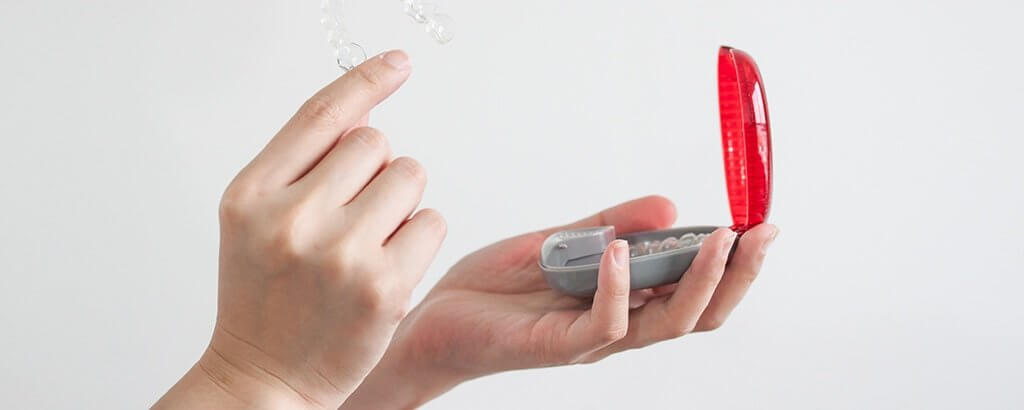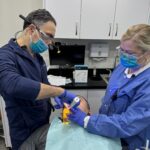Here are some Frequently Asked Questions we have received from people willing to get Invisalign® treatment. Hopefully these will be of help to someone. If you want to ask anything please do so in the comments section.

What is Invisalign® Treatment?
Invisalign clear aligners are the invisible way to straighten teeth without braces. Invisalign treatment uses a series of clear, invisible, and removable aligners to gradually straighten teeth, without metal or wires.
How does Invisalign treatment work?
Invisalign provider uses 3-D computer imaging technology to depict the complete treatment plan from the initial position to the final desired position from which a series of custom-made “aligners” are produced. Each “aligner” moves teeth incrementally and is worn for couple weeks, then replaced by the next in the series until the final position is achieved.
What are the primary benefits of Invisalign clear aligners?
•Invisalign aligners are clear. You can straighten your teeth without anyone knowing.
•Invisalign aligners are removable. Unlike braces, you can eat and drink what you want during treatment. You can also brush and floss normally to maintain good oral hygiene.
•Invisalign aligners are comfortable. There are no metal brackets or wires as with braces to cause mouth irritation, and no metal or wires means you spend less time in the doctor’s chair getting adjustments.
•Invisalign aligners allow you to view your own virtual treatment plan before you even start? You can see how your straight teeth will look when your treatment is complete.
What are aligners made of?
Aligners are made of clear, strong medical grade plastic that is virtually invisible when worn.
Does it hurt to wear Invisalign aligners?
There is no real pain using Invisalign clear aligners. You might have minor aches from using and usually, if you’ve started a new tray the first couple of days it is more comfortable leaving them in than taking them out, as your teeth move back to the original position and so it can hurt. However some people could be in great pain first days, but it would be no different from using traditional wire braces. To summarize if you have a low pain threshold, please be prepared for some pain/irritation for the first couple of days for each new tray.
How often do I need to change my trays?
Usually it’s every two weeks, so if you’ve been given 16 trays, that’s 32 weeks or 8 months worth of treatment. Some Orthodontists however may ask you to keep them in for longer than the two week period. This can be for a number of reasons, like a tooth isn’t moving as planned.
Can I drink alcohol with Invisalign aligners?
Depending on the Orthodontist you’ll get different information. We would say it’s fine in moderation, but to be sure to clean the teeth thoroughly at the end of the night to avoid any wearing of the enamel.
What about refinements?
Refinements are done at the end of the treatment if you’re teeth have not moved according to plan. It comes free with the full Invisalign treatment, however if you have the quick Invisalign plan you don’t get these included.
What’s IPR?
No it’s not Intellectual Property Rights, it stands for Interproximal Reduction. Which to put it bluntly is teeth shaving. The Orthodontist will take a little of the enamel off the edges of the teeth to make room when they’re moving. Initially this can look unsightly, and feel weird when being done, but it doesn’t hurt, and the gaps created will close up – this is often an area where people worry, but there’s nothing to worry about.
What do Invisalign aligners look like?
Aligners are clear and look similar to tooth-whitening trays, but are custom-made for a better fit to move teeth. Some orthodontists and dentists have referred to them as “contact lenses for teeth.”
Is this a new way to straighten teeth?
For years, orthodontists and dentists have used removable appliances for limited treatment. Today, with the application of computer technology and custom manufacturing, Invisalign aligners treat a broader range of cases with greater precision.
How do Invisalign aligners effectively move teeth?
Like brackets and arch wires are to braces, Invisalign aligners move teeth through the appropriate placement of controlled force on the teeth. The principal difference is that Invisalign aligners not only controls forces but also controls the timing of the force application. At each stage, only certain teeth are allowed to move, and these movements are determined by the orthodontic treatment plan for that particular stage. This results in an efficient force delivery system.


